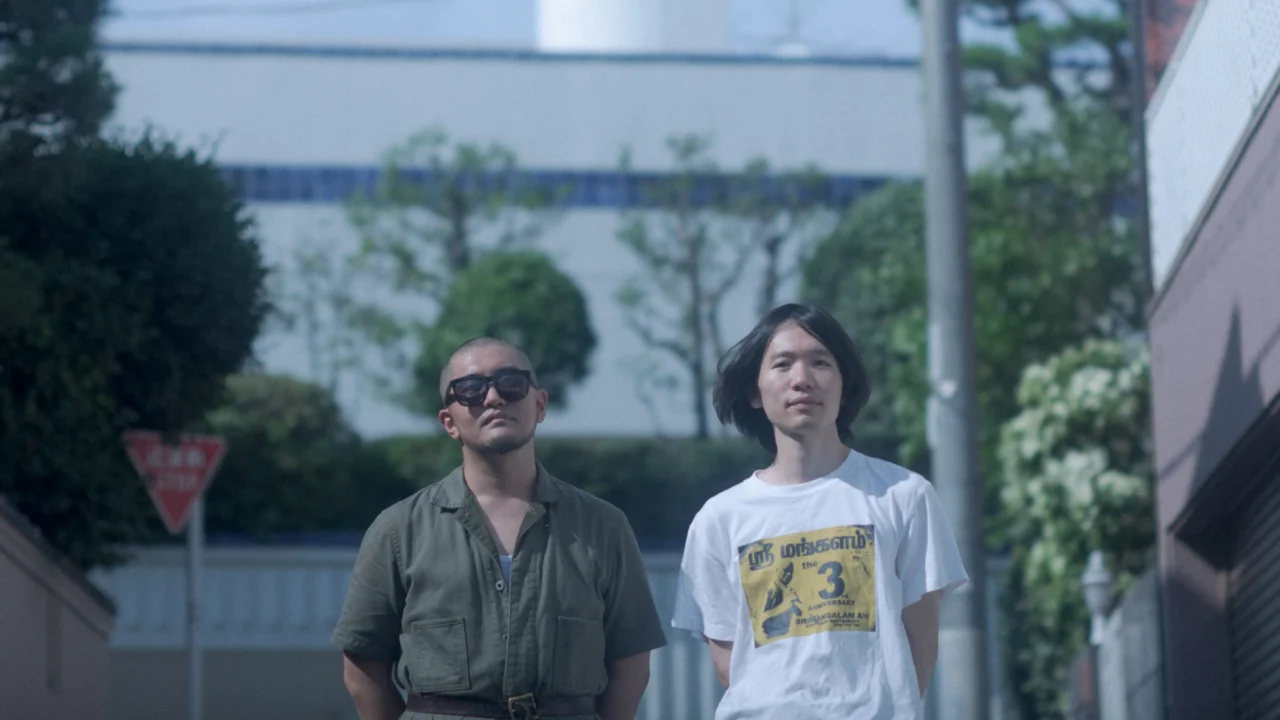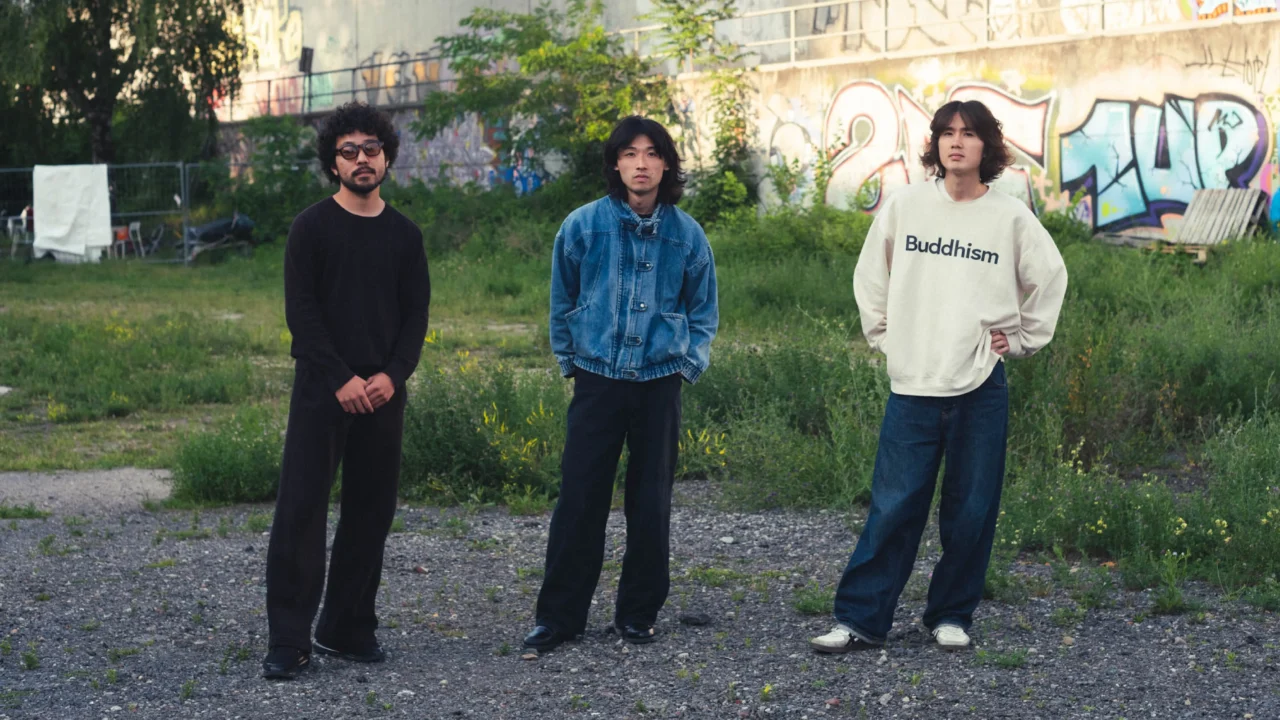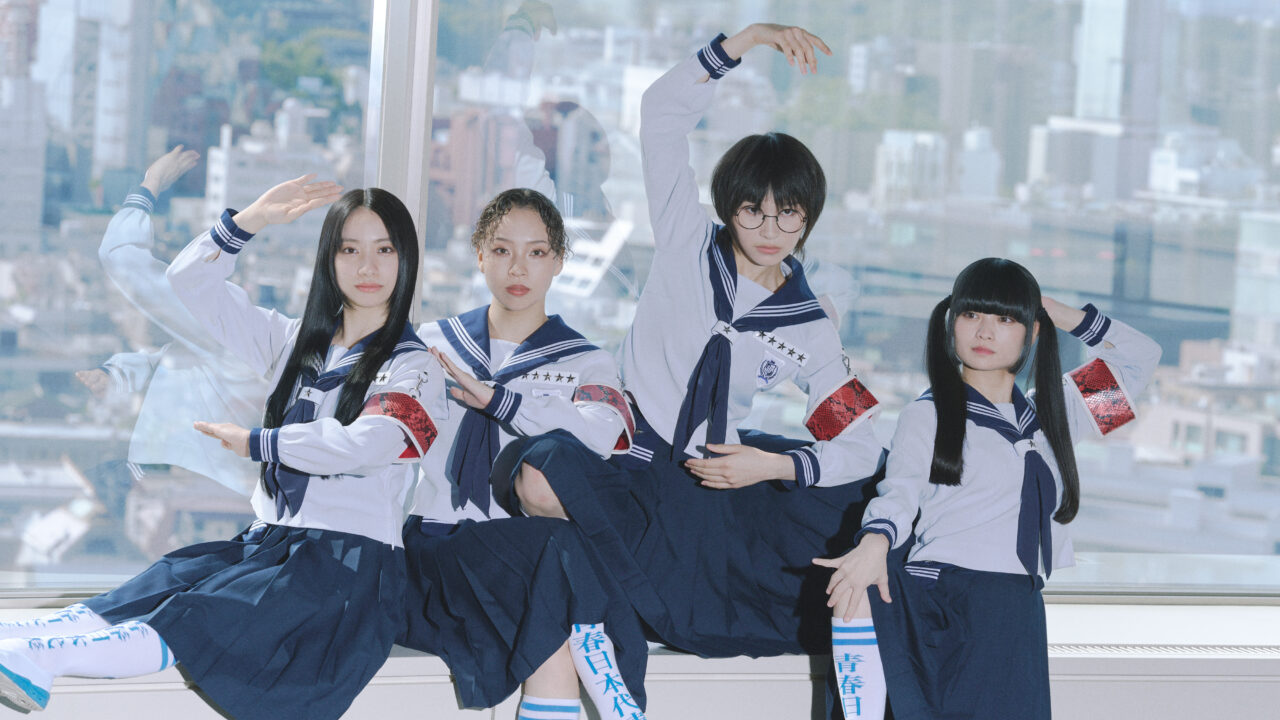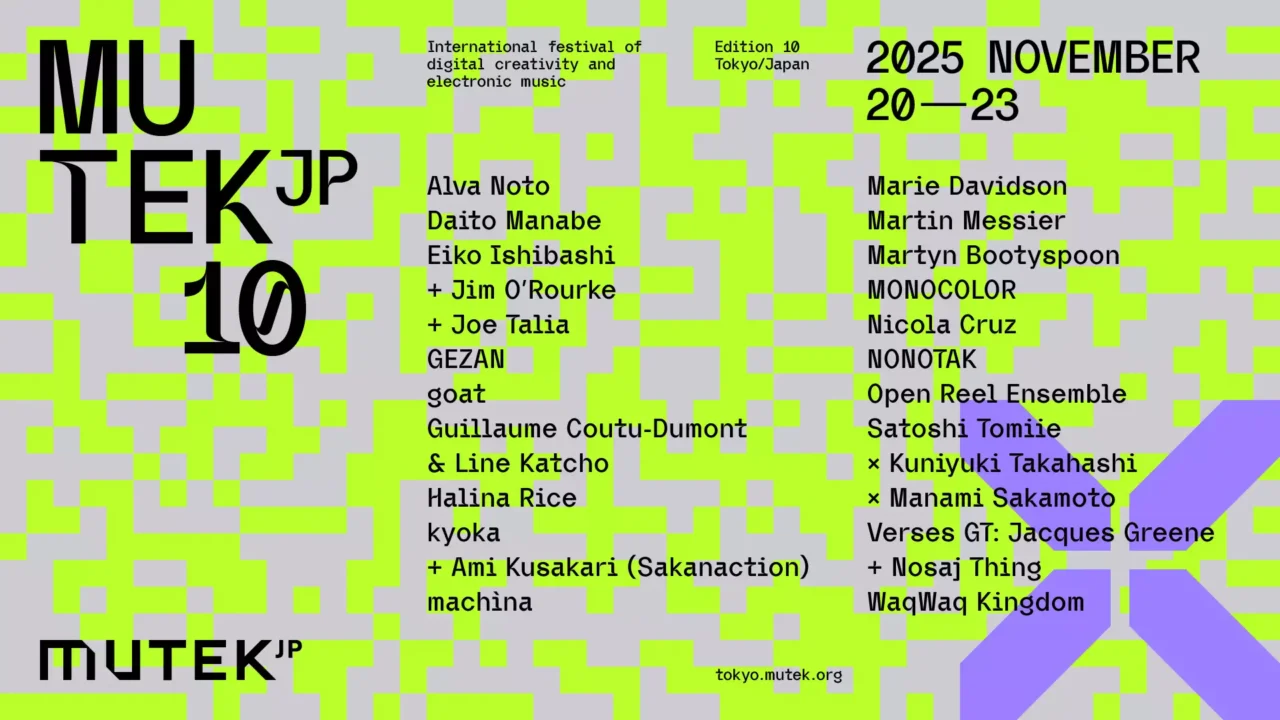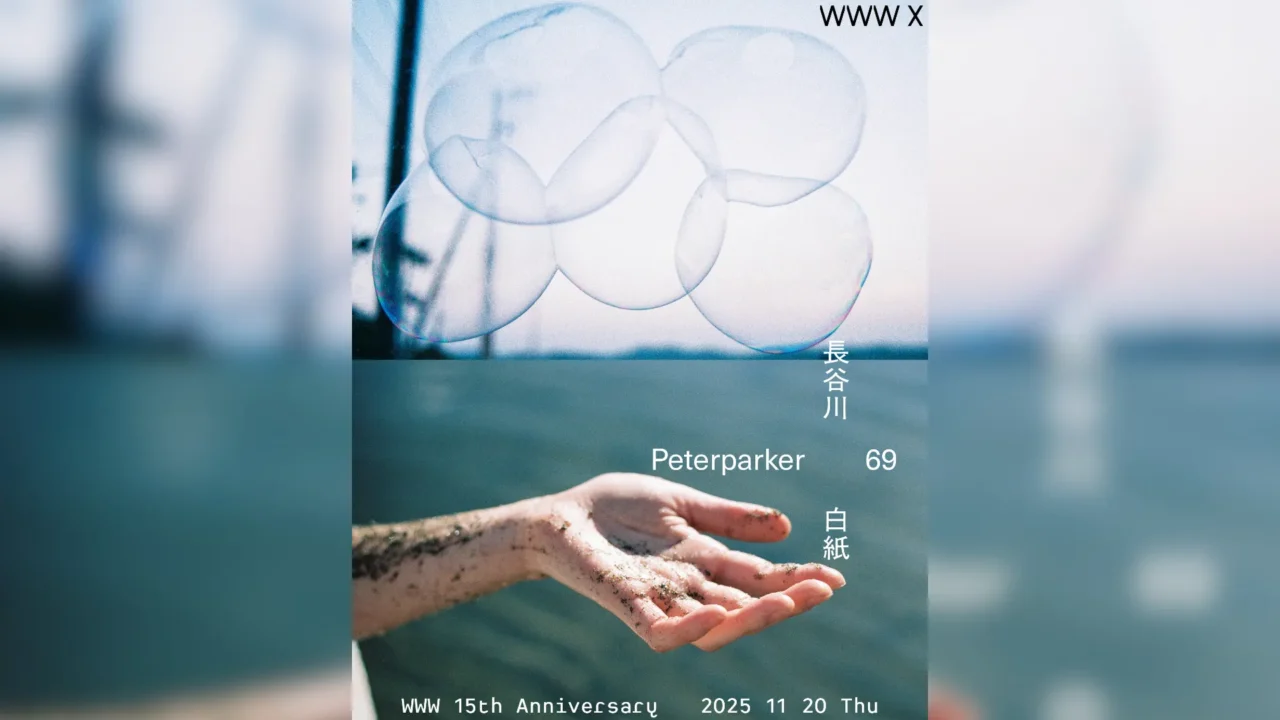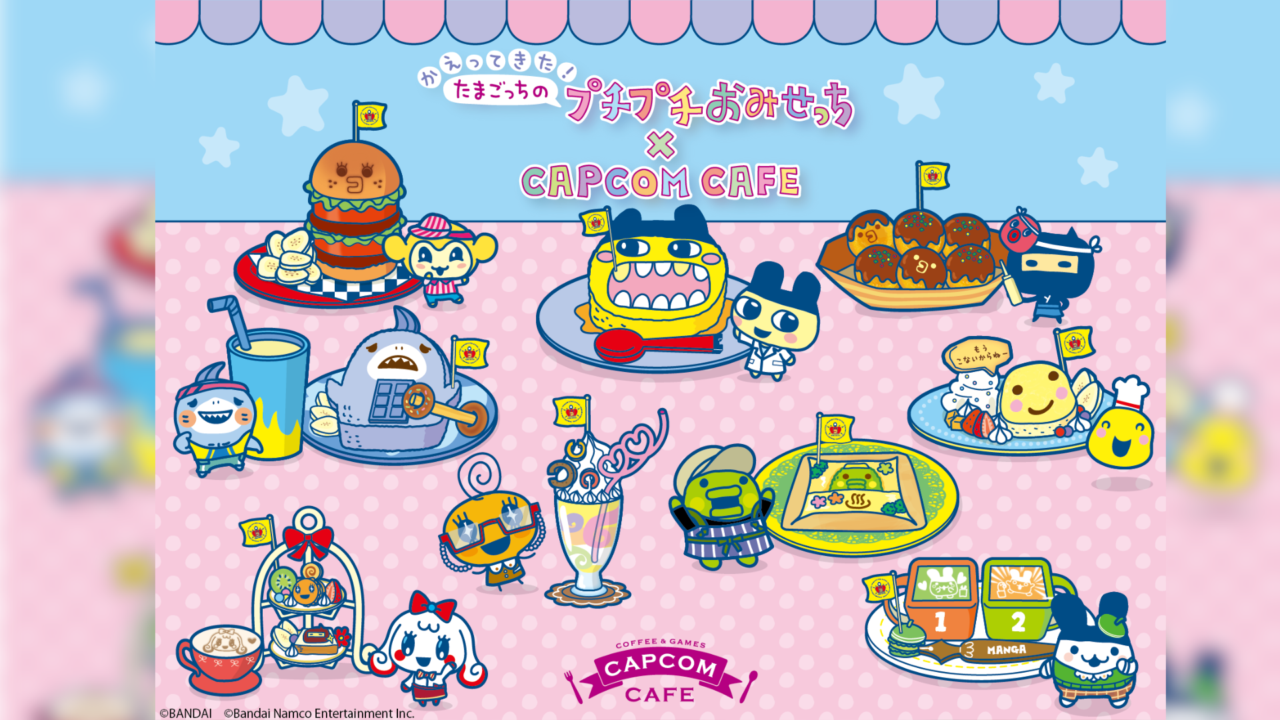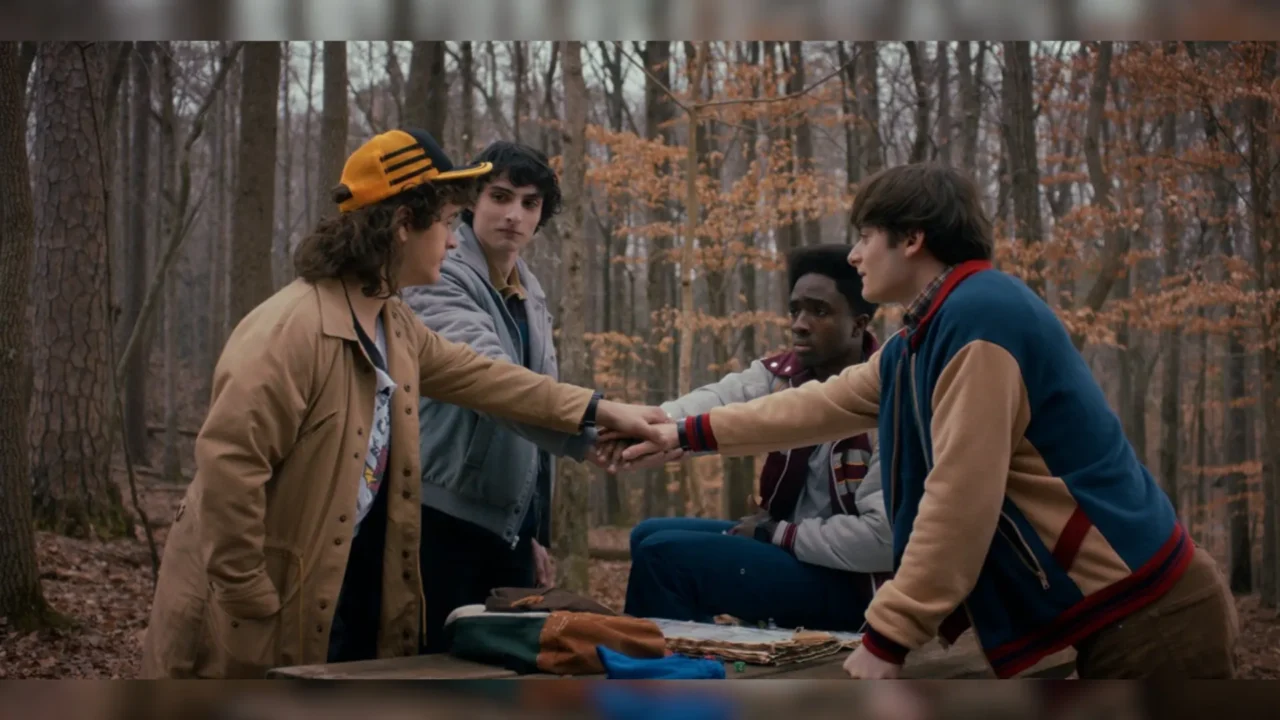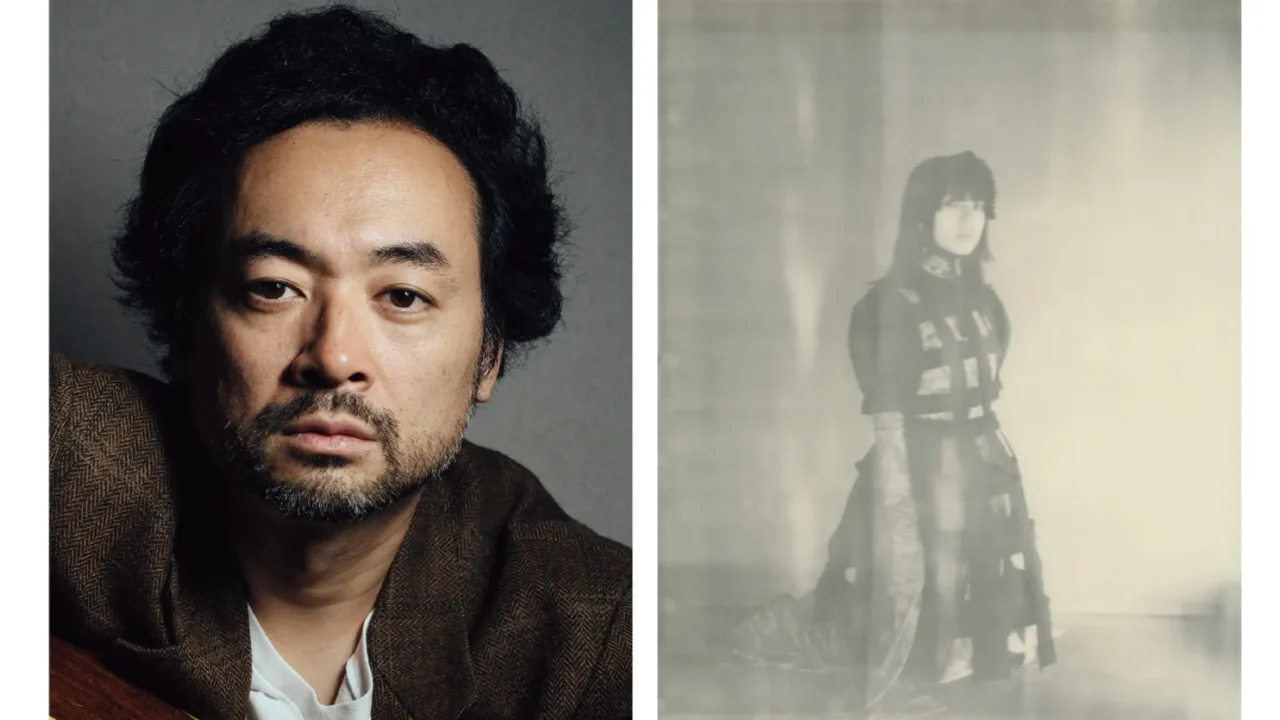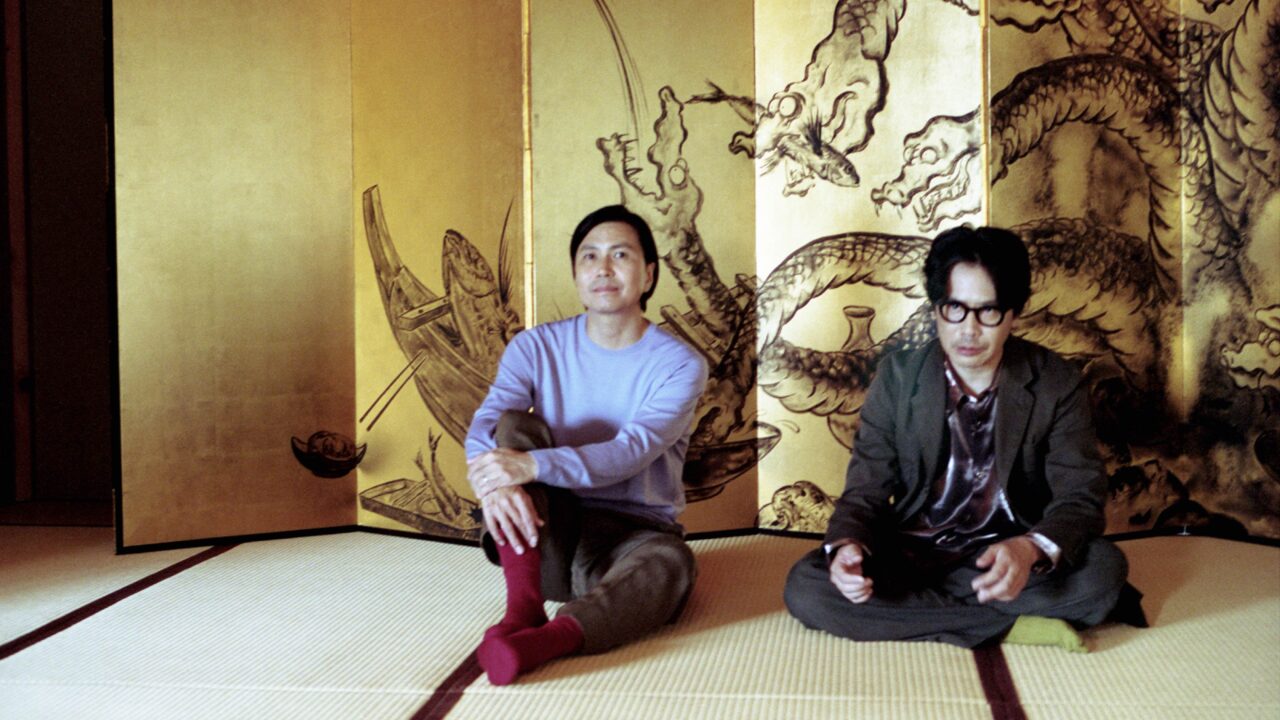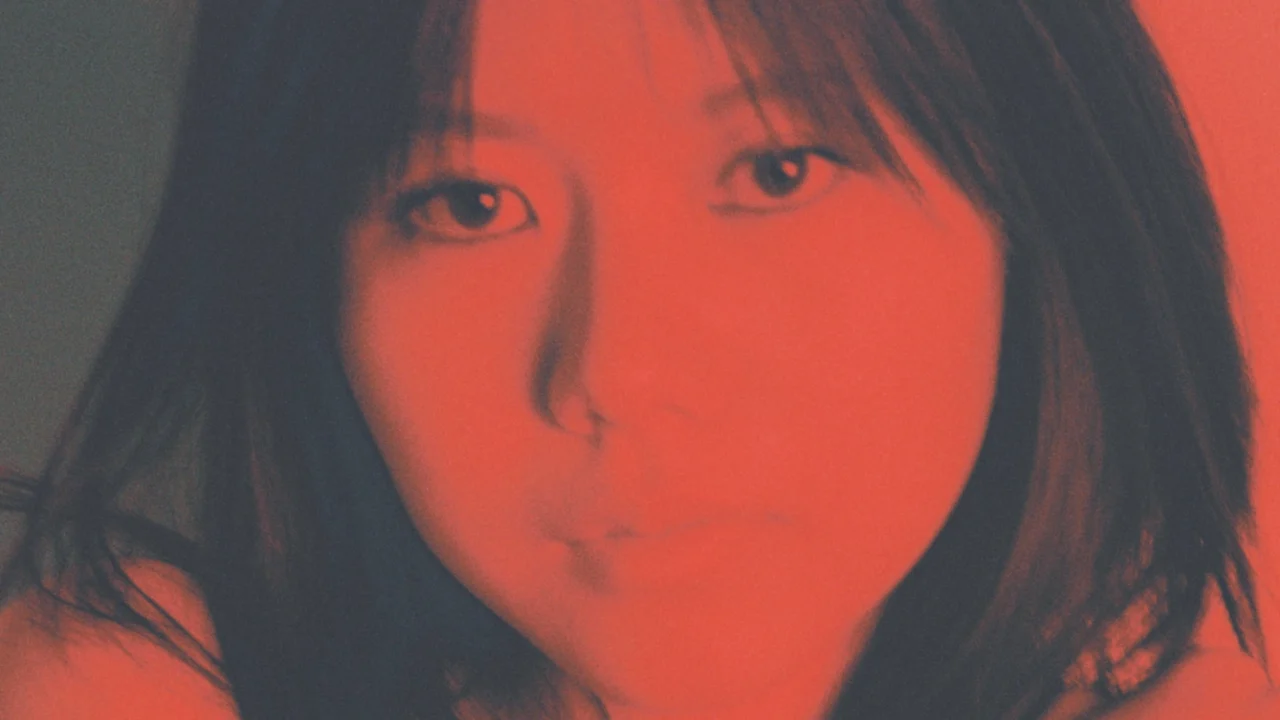It was a day that could only have happened in Yamagata. In May, the historic Bunsyōkan became the setting for a one-off performance by Manami Kakudo and her band—a live event born not from a tour schedule, but from the quiet connections she’s nurtured with local creators. Capturing the atmosphere of this deeply rooted collaboration is Yamagata-based writer imdkm.
INDEX
At the Heart of Yamagata’s Cultural Heritage: Manami Kakudo at Bunsyōkan
Manami Kakudo is coming to Yamagata. And with a full band set. And at Bunsyōkan. After touring Yamaguchi, Kyoto, Onomichi, Fukuoka, and Nagasaki, plus a four-city tour in China and a show in Tokyo, Yamagata has now been added to the “Contact” album tour.
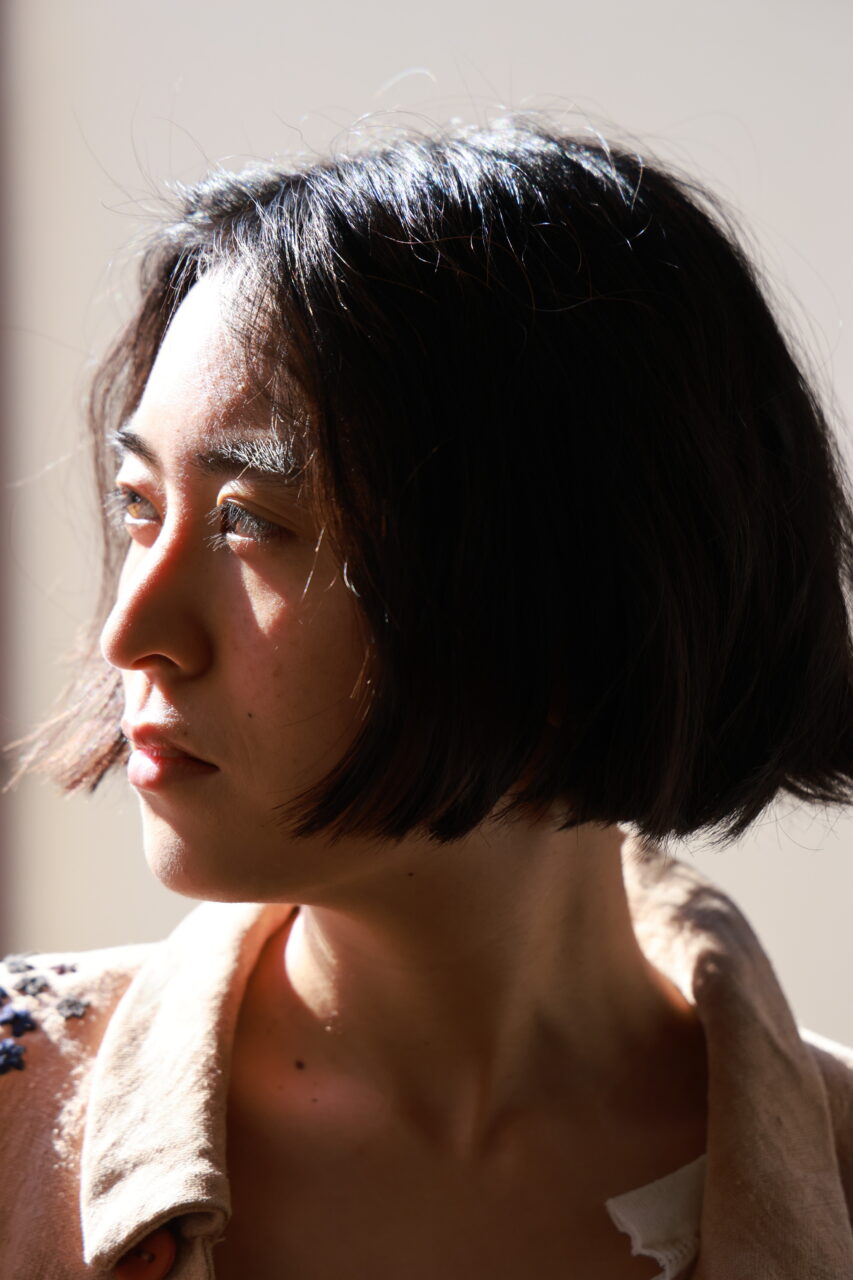
Manami Kakudo is a versatile musician and percussionist from Nagasaki Prefecture, raised amid mountains and rivers. She creates and performs using a wide range of percussion instruments—including the marimba—along with her voice, words, and everyday objects. Beyond her solo career, Kakudo has contributed live support and recordings for artists such as cero, Tomoyo Harada, Hikari Mitsushima, dip in the pool, and Taikū Jikan. She also composes music for films, theater, dance, and art installations. In 2022, she released “Yodaka,” the theme song for the film Yodaka no Kataomoi. Her latest solo album, Contact, was released in January 2024, marking her first solo release in four years.
The venue for Contact × Yamagata, Bunsyōkan, is officially known as the Yamagata Prefectural Folk Museum and was formerly the prefectural government office—a magnificent historic building. While it is designated as an Important Cultural Property of Japan and serves as a popular tourist spot, the plaza on the grounds is also a beloved gathering place for local residents, and the building itself is frequently used for various events. In fact, on the afternoon of the live day when I arrived too early, a local mikoshi (portable shrine) was resting in the plaza. Sitting on a bench with a coffee in hand, surrounded by people wearing traditional happi coats and spectators watching the scene, I felt a strange but wonderful sense of anticipation knowing that soon I would be watching Kakudo perform here.
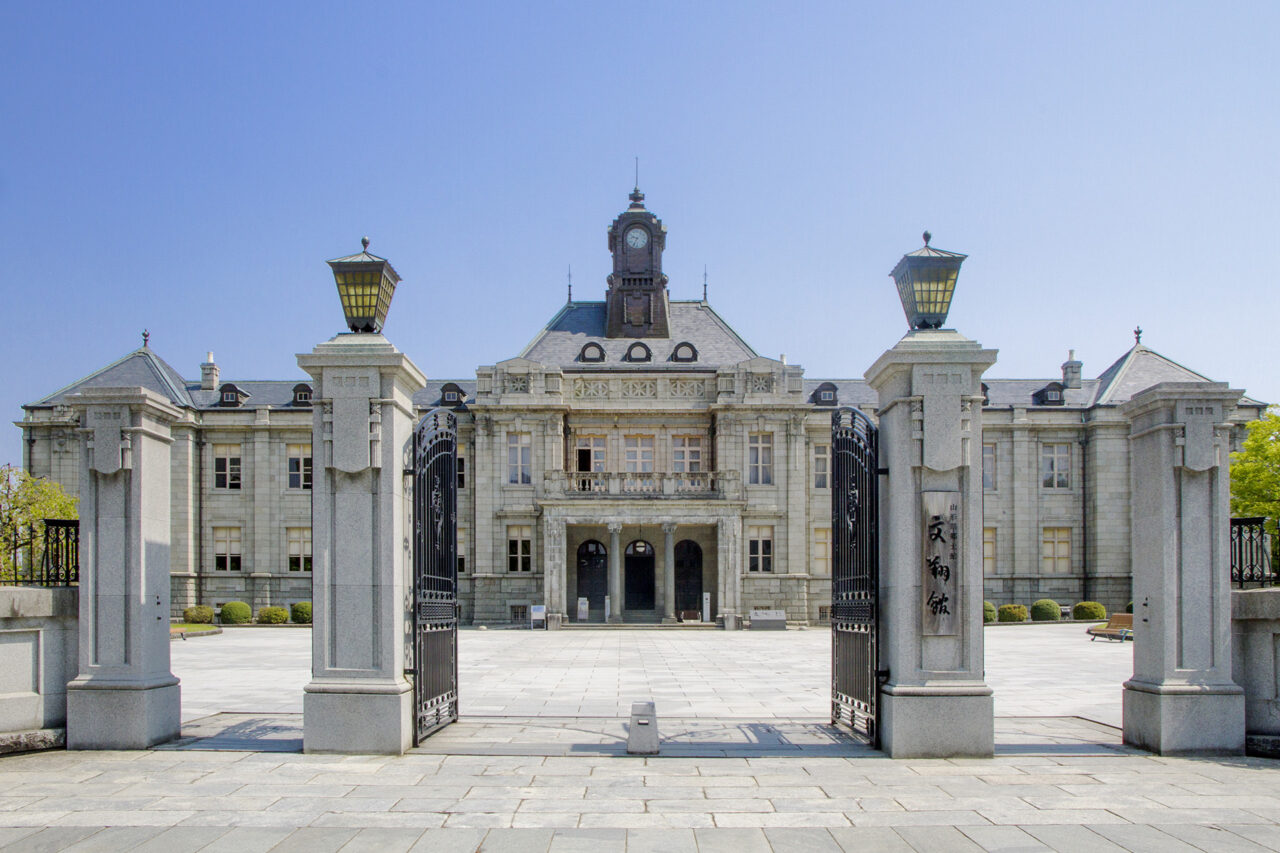
About an hour and a half before the show started, the band was rehearsing in the Gijō Hall, which had just opened. They were playing the song “i o e o.” The seating was arranged in a fan shape around a small, low stage set up in the center of the room. On the stage’s left side were Kakudo’s instruments: marimba, autoharp, a compact electric piano, and a guitar. Moving to the right, the lineup included Akita Goldman on double bass, Wataru Mitsunaga on drums and percussion, Mugi Furukawa on guitar, and Hiromiko Iwa on cello. Five column-shaped speakers stood quietly nearby, almost like shadows following the band members.
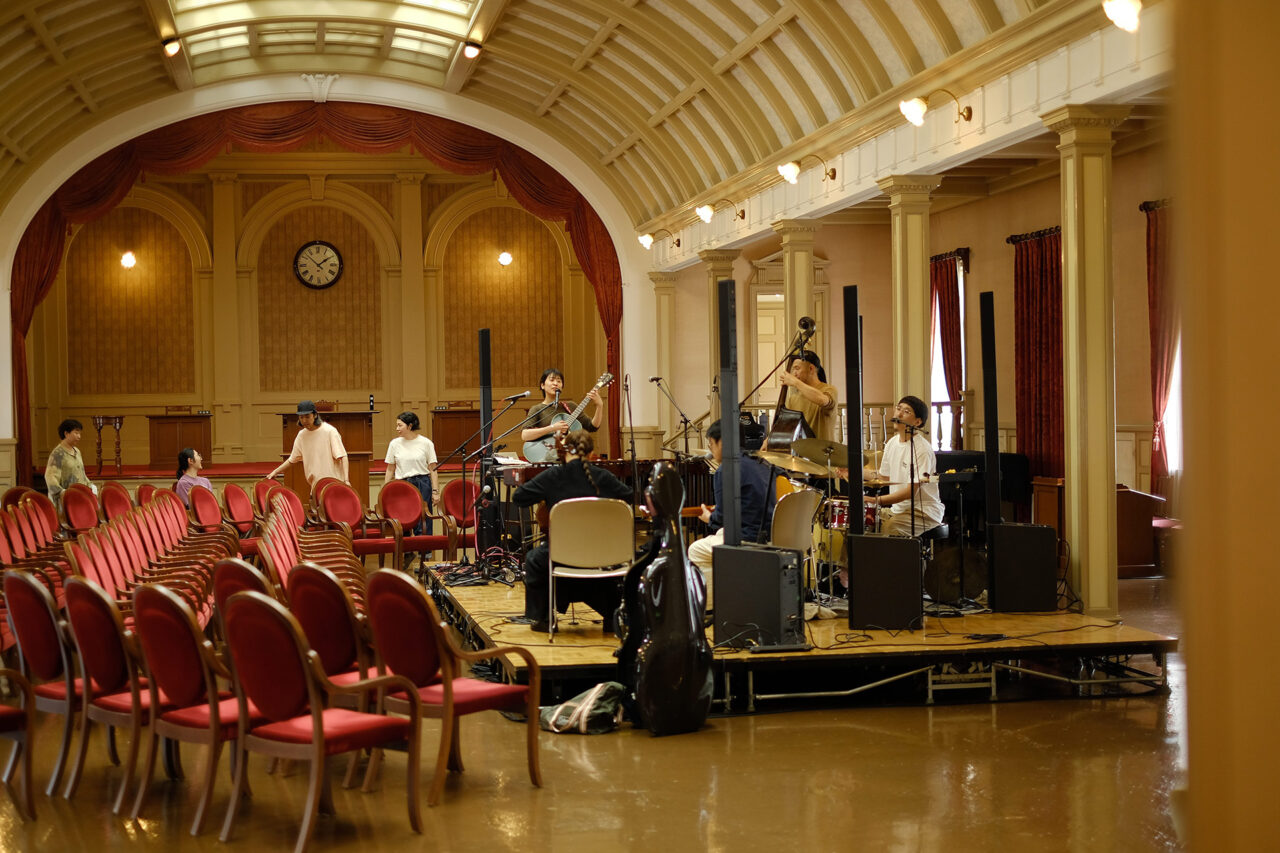
Following a friendly and easygoing rehearsal, the band members briefly left the stage. The venue then filled with the gentle sounds of flowing water and wind chimes, acting as the event’s ambient background.
INDEX
The Idea Behind Pairing a Bookbinding Workshop with the Live Show
This live show doubled as the launch of an archive book capturing the Contact album tour. Rather than showcasing a collection of completed books, the venue featured a makeshift bookbinding workshop where participants could create their own books before and after the performance.
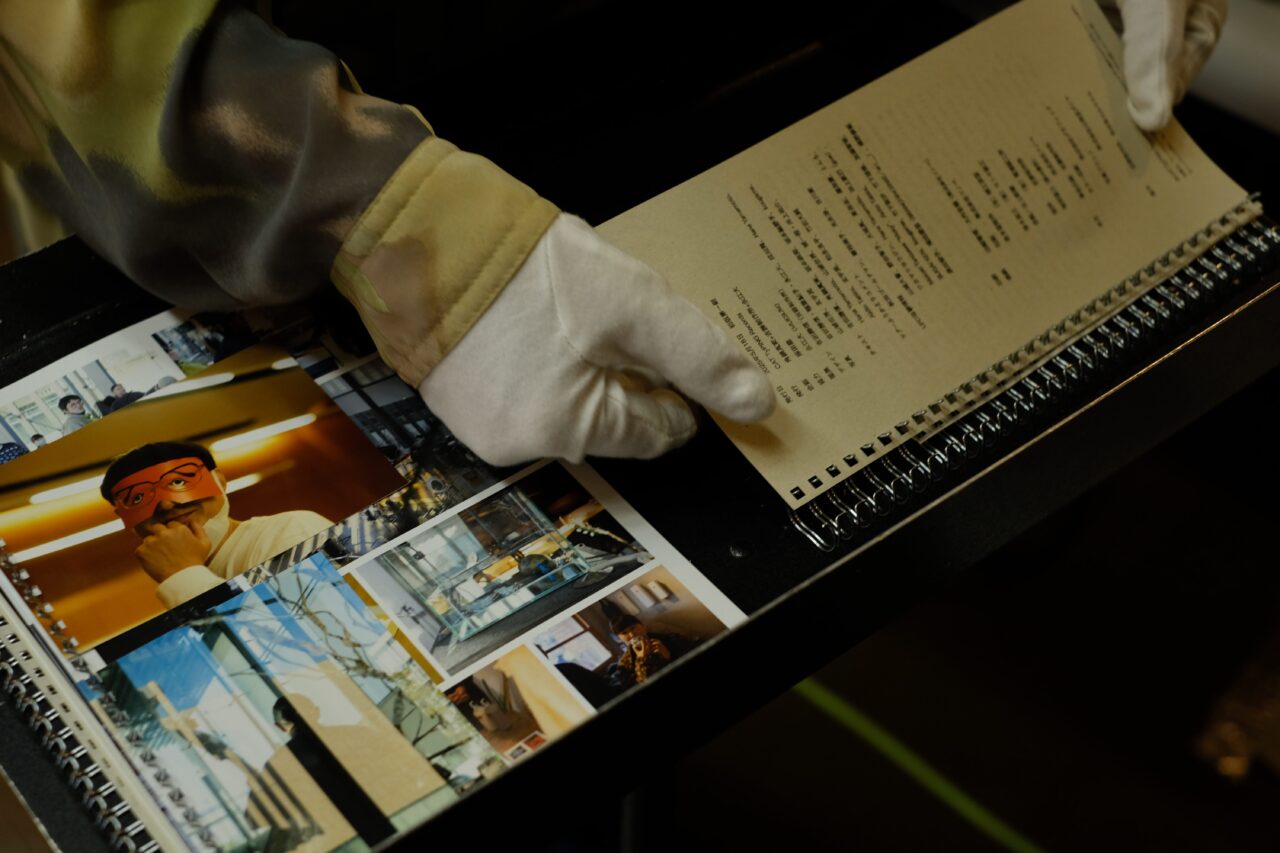
The archive book played a key role in the journey leading up to this live event. Katsunobu Yoshida of Yoshikatsu Seisakusho — the studio behind the book’s production — is a collector, designer, and printer based in Oe Town, Yamagata. Kakudo first connected with Yoshikatsu Seisakusho through a corporate prototyping project*, and decided to partner with them to create new merchandise for the Contact tour. In October 2024, she spent time at their studio in Oe Town during a production retreat to work on these goods. This collaboration with Yoshikatsu Seisakusho and the ties to Yamagata naturally evolved into the creation of the archive book, leading up to the Contact × Yamagata event.
Yoshikatsu Seisakusho participated in Kokuyo’s Yokoku Institute project called “GRASP: Prototyping a ‘Collective Research Method’,” producing the animation Digest The World: Another Organ, with sound direction and music by Kakudo.
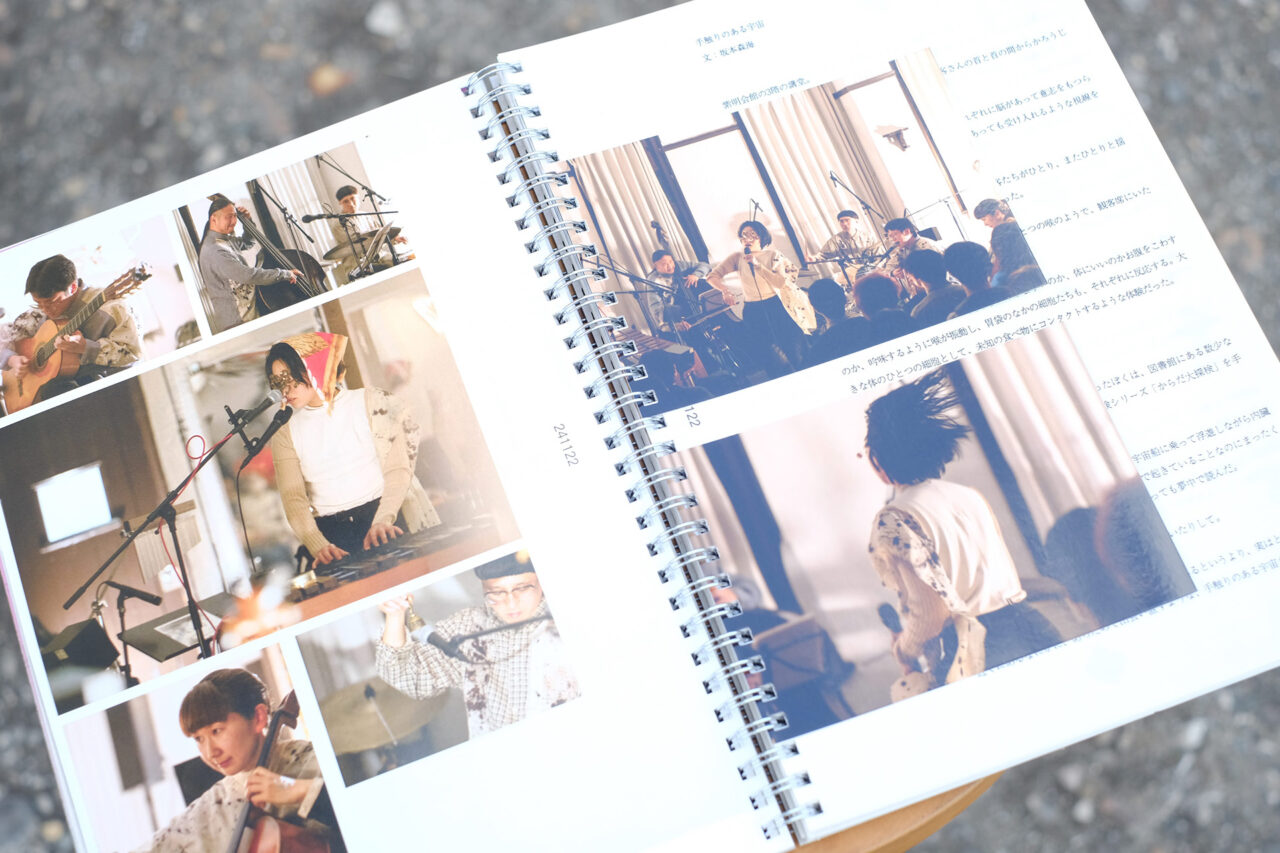
Running just a little behind schedule, the five musicians took the stage once again. The live show began with “i o e o,” the same song they had rehearsed earlier. The delicate plucking of guitar, upright bass, and cello pizzicato slowly filled the Gijō Hall, gradually immersing the space in the world of Contact.








